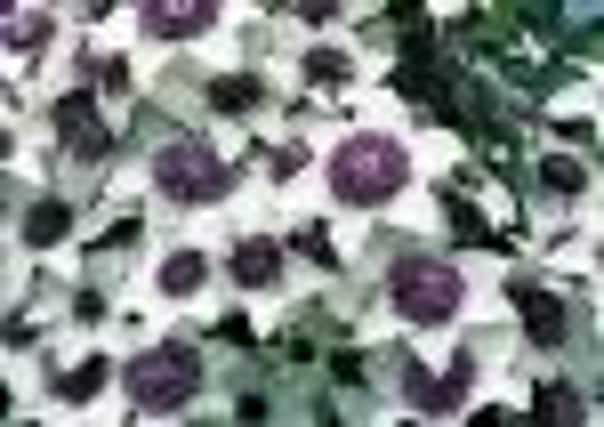Upwardly mobile


Trellises, pergolas and arches are crying out for the weaving tendrils of a climber. But beware the little Napoleons of plants who start off small but end up trying to take over.
You’re pretty safe with the late-flowering clematises, such as Clematis Viticella, which will bring beautiful colour from late summer until early autumn.
Advertisement
Hide AdAdvertisement
Hide AdCascading over walls and fences, growing around doorways and windows, these are the perfect floral decoration and can transform a bland wall or fence.
Look out for Clematis Alba Luxurians, with its gorgeous green-tipped, white sepals, Etoile Violette, with its violet-purple flowers, or Purpurea Plena Elegans with seductive purplish-mauve sepals.
But the clematis don’t have it all their own way – there are other climbers which worthy of a place in many a garden.
For fabulous fragrance and flowers in mid and late summer, choose Lonicera periclymenum, also known as Woodbine or Common honeysuckle, whose flowers are white-yellow with a flush of red.
Advertisement
Hide AdAdvertisement
Hide AdAnd Serotina (popular name Late Dutch Honeysuckle) which bears creamy white flowers, or Graham Thomas are fantastic choices, the latter having an exceptionally long flowering period.
Just remember that honeysuckles which flower on the previous year’s growth, will benefit from pruning immediately after flowering ends.
Prune back to strong new side-shoots any time now. And if flowers aren’t a necessity, there’s the old favourite, Hedera (ivy) which can provide particularly good coverage – quickly.
They come with very attractive, colourful foliage at different times of the year, different leaf shapes and growth habits.
Advertisement
Hide AdAdvertisement
Hide AdSome are relatively sedate; others grow so quickly that it’s almost possible to see them expanding their territories.
Just remember that they need pruning, although they can also provide valuable nesting sites for many small birds, especially wrens, so don’t use the secateurs until the nesting period is over .
Another interesting option could be a grapevine. Vitis vinifera Perlette will grow outdoors against a south-facing wall and may yield edible and attractive bunches of green grapes.